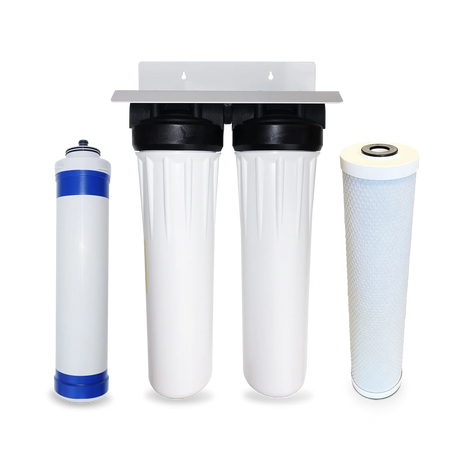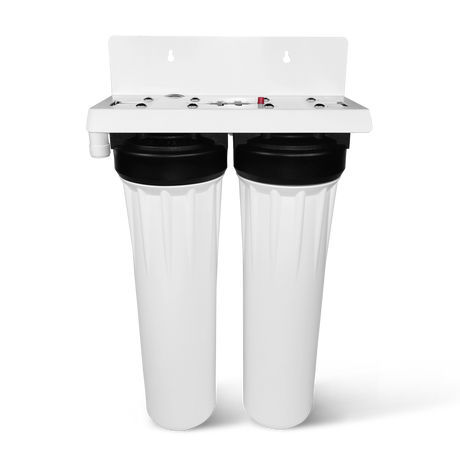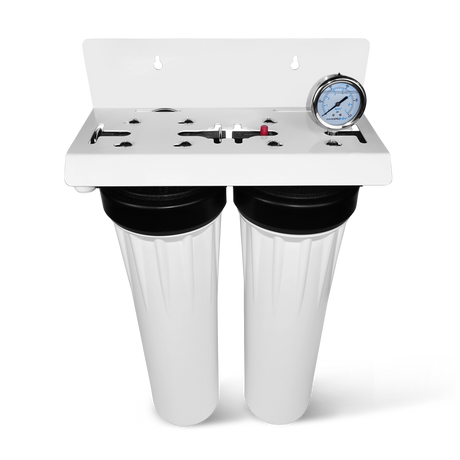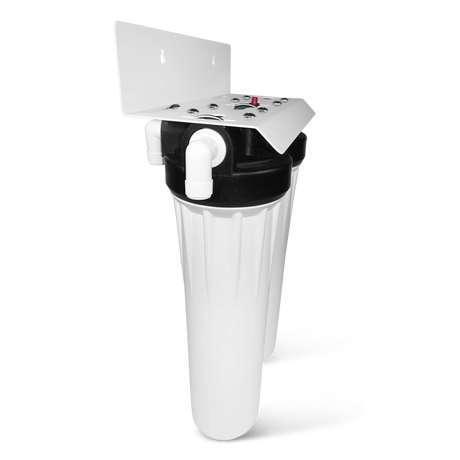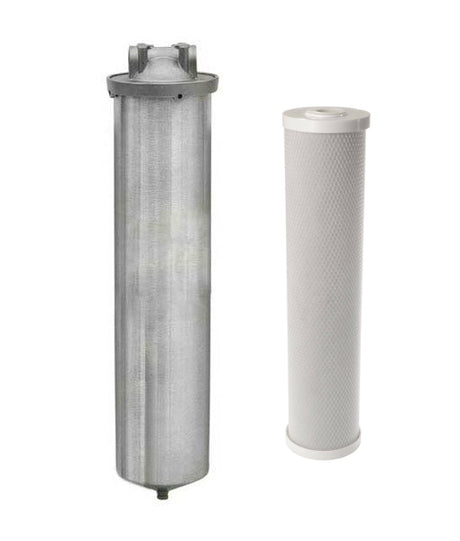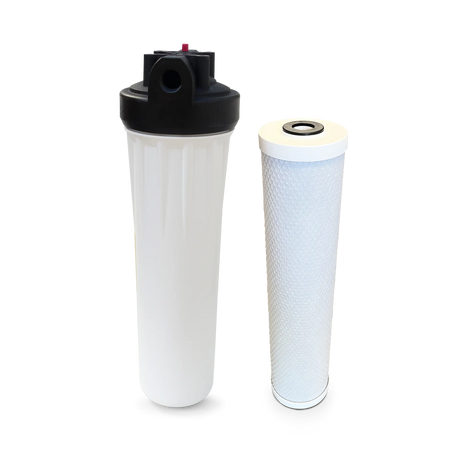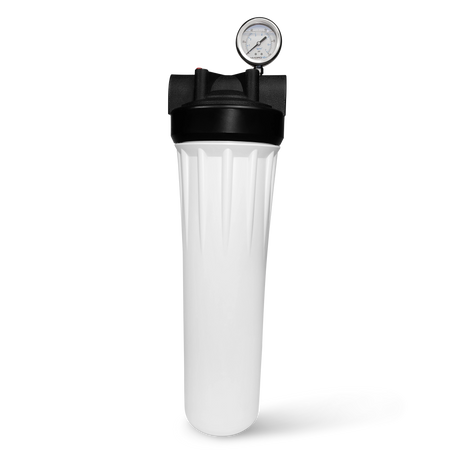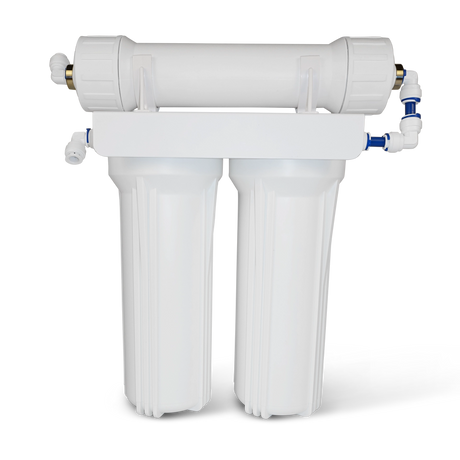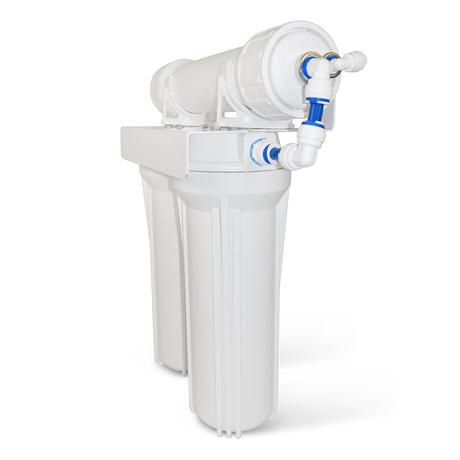Radon in Your Water: Health Risks and Proven Removal Methods
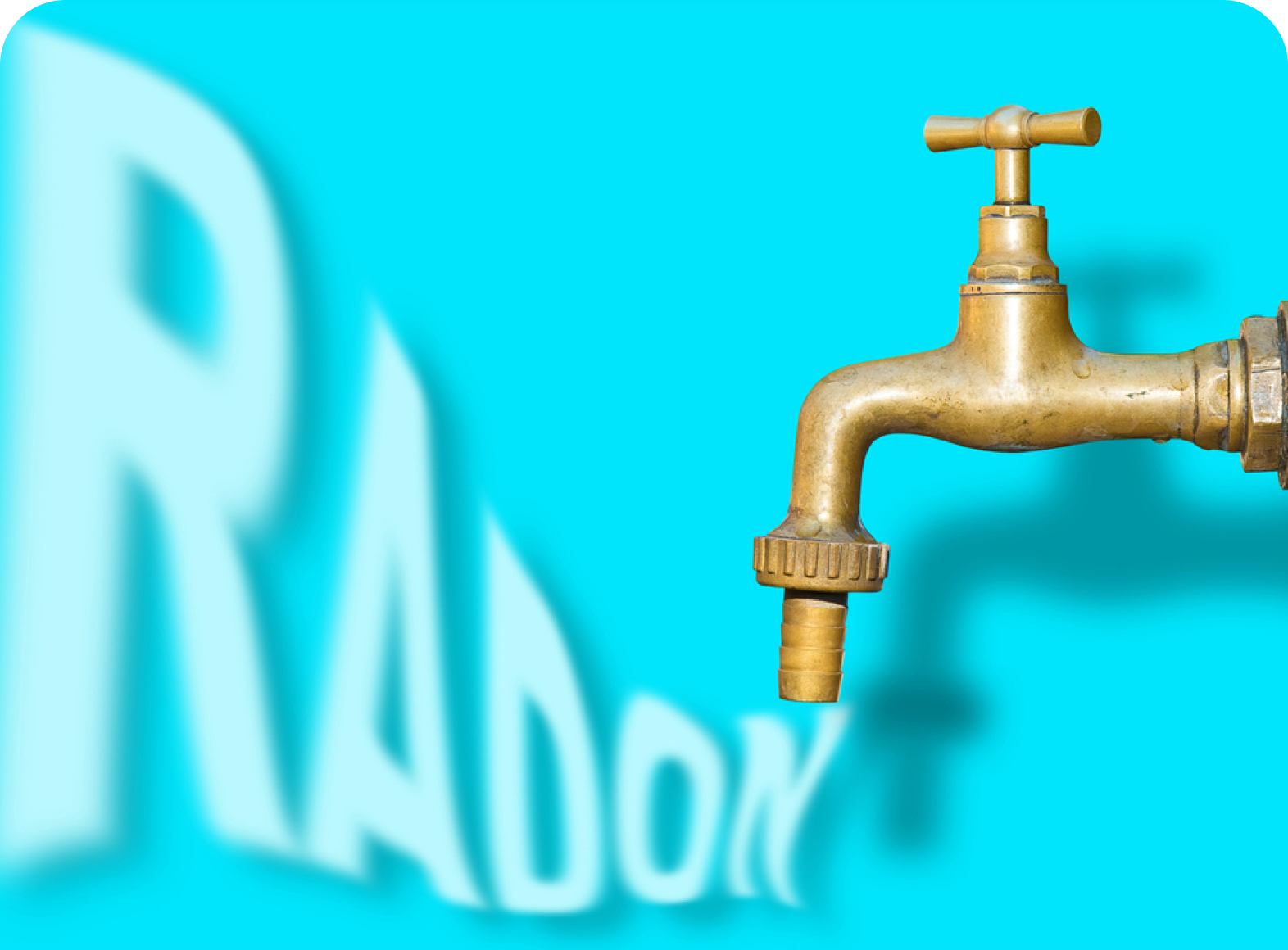
Radon, a naturally occurring radioactive gas, poses a significant health risk when present in drinking water. In the United States alone, radon from household water causes 30 to 1,800 deaths annually. This invisible, odorless, and tasteless threat demands our attention and action.
In this comprehensive guide, we'll explore the nature of radon, its health impacts, and most importantly, how to effectively remove it from your water supply. Our goal is to equip you with the knowledge and solutions for safe, clean drinking water throughout your home.
Understanding Radon: Sources and Contamination Pathways
Radon is a chemical element produced during the breakdown of uranium in soil, rock, and water. While inhalation is the most common exposure route, ingestion through contaminated water is also a significant concern.
Key points about radon in water:
- Underground water sources (wells, springs, boreholes) are susceptible to radon contamination
- Surface water sources (lakes, rivers, streams) generally have low radon levels
- Radon presence depends on surrounding geological conditions
- States most affected: California, New York, Arizona, Wisconsin, and Missouri
- Nearly 5 million people use public water supplies with elevated radon levels
Even if you don't drink contaminated water, everyday activities like showering, dishwashing, or laundry can release radon into the air, contributing to indoor air pollution. Radon gas can become trapped inside buildings after entering through foundation cracks, significantly affecting indoor air quality worldwide.
Health Risks Associated with Radon Exposure
Radon exposure carries serious health consequences, primarily related to cancer risk:
- 30 to 1,800 annual deaths in the US due to radon in household water
- Increased risk of internal organ cancers, especially stomach cancer, from ingestion
- 12,900 to 21,000 lung cancer deaths per year from radon inhalation
- Second leading cause of lung cancer after smoking
- Synergistic effects with smoking, increasing lung cancer risk
- About 2,900 annual lung cancer deaths in non-smokers due to radon
The United States Environmental Protection Agency (EPA) and researchers estimate that radon is responsible for a significant number of lung cancer deaths each year. This makes radon exposure a critical public health concern, second only to cigarette smoking in terms of lung cancer risk factors.
Health Guidelines and Safety Thresholds for Radon in Water
While there are no national drinking water standards for radon, health experts provide guidelines to help assess risk:
- The Environmental Working Group recommends no more than 1.5 picocuries per liter
- This level represents a one-in-a-million lifetime cancer risk
- Higher levels indicate an increased cancer risk
If you live in a radon-prone area or suspect radon in your water, it's crucial to use an appropriate water filtration system. Regular testing and monitoring of radon levels in both water and air are essential for maintaining a safe living environment.
Effective Water Filtration Technologies for Radon Removal
Two primary filtration technologies effectively reduce radon in water:
- Activated Catalytic Carbon Filtration: This method uses specially treated carbon to adsorb radon and other contaminants.
- Reverse Osmosis: This process forces water through a semipermeable membrane, effectively removing a wide range of contaminants, including radon.
For comprehensive radon removal, we recommend the Premiere PS-2000PB + HydroGuard Reverse Osmosis system, which combines:
- PS-2000PB: 0.02 micron ultrafiltration membrane with activated catalytic carbon post-filter
- HydroGuard: Reverse osmosis system removing up to 99% of contaminants
Whole House Water Filtration Solutions
1. PS-2000PB - Ultrafiltration System with Activated Catalytic Carbon
- 0.02 micron ultrafiltration membrane
- Removes bacteria, viruses, protozoa, and colloidal materials
- Excellent for VOCs, pesticides, radon, solvents, and other chemicals
- Unique flushing feature for membrane maintenance
- Provides comprehensive filtration for all water used in the home
The PS-2000PB system offers exceptional VOC and chemical contaminant reduction, tackling a wide range of pollutants including pesticides, benzene, solvents, trihalomethane compounds (THMs), methane tertiary butyl ether (MTBE), perfluorooctanoic acid (PFOA), perfluorooctane sulfonate (PFOS), and other man-made chemicals.
2. BG-20PB - Activated Catalytic Carbon Whole House System
- 0.5 micron nominal filtration
- Reduces lead, chlorine, chloramine, cysts, VOCs, radon, and more
- High dirt-holding capacity
- Impressive contaminant reduction rates: 96%+ reduction of lead (8.5 pH), 95%+ reduction of VOCs, 90%+ reduction in chlorine at 2 ppm, 83%+ reduction in chloramine at 3 ppm
Safeguard your entire home with the BG-20PB. This powerhouse filtration system tackles a wide array of contaminants, from harmful lead and radon to unpleasant chlorine tastes and odors. With its impressive 0.5 micron filtration and high dirt-holding capacity, it ensures clean, safe water from every tap in your house. Experience peace of mind knowing that up to 96% of lead, 95% of VOCs, and 90% of chlorine are eliminated, providing your family with water that's not just clean, but exceptionally pure. Invest in the BG-20PB today and transform your home's water quality for years to come.
Drinking Water Filtration Options
1. PS-PURUF - Ultrafiltration Drinking Water System with bone char + carbon combo finishing filters
- 0.02 micron ultrafiltration membrane
- 0.5 micron activated carbon filter
- Bone char carbon filter effectively reduces fluoride, heavy metals (including arsenic, lead, mercury), and radioactive contaminants.
- Effective against a wide range of contaminants including radon
- Filters out particulates, bacteria, protozoa, cysts, viruses, algae, dirt, mold, and silt
- Reduces lead particulates, VOCs, chlorine, chloramines, pharmaceuticals, and pesticides
Experience excellent water quality with the PS-PURUF with bone char + carbon combo finishing filters. This powerhouse tackles everything from microscopic threats like bacteria and viruses to chemical pollutants including lead, radon, and fluoride, while also addressing emerging concerns such as pharmaceuticals and pesticides. Invest in the PS-PURUF and transform your drinking water into a clean, and safe source of hydration for your entire family.
2. HydroGuard Reverse Osmosis System
- Removes up to 99% of dissolved solids, including radon
- Effective against chlorine, fluoride, microorganisms, and heavy metals
- Features FLOWLOK™ leak detector and SHOKBLOK™ system protection
- Eliminates up to 99% of dissolved solids, chlorine, fluoride, microorganisms, and heavy metals such as barium, cadmium, chromium, lead, and mercury
The HydroGuard system includes advanced features for safety and longevity:
- FLOWLOK™ leak detector shut-off valve: Silently guards against water leaks by detecting water and shutting off the system
- SHOKBLOK™ system protection valve: Helps protect the system from water hammer and spikes in water pressure
Transform your water quality with the HydroGuard Reverse Osmosis System, which eliminates up to 99% of contaminants including radon, chlorine, fluoride, and heavy metals. This powerhouse not only delivers exceptionally pure water but also ensures peace of mind with its advanced FLOWLOK™ leak detection and SHOKBLOK™ pressure protection features. Invest in the HydroGuard system for unparalleled water purity and long-lasting, worry-free operation.
Choosing the Right Filtration System for Your Needs
When selecting a water filtration system to address radon contamination, consider the following factors:
- Water source: Well water is more likely to contain radon than municipal water supplies
- Radon levels: Higher concentrations may require more robust filtration solutions
- Whole house vs. point-of-use: Decide whether you need filtration for all water entering your home or just for drinking water
- Maintenance requirements: Consider the ease of filter replacement and system upkeep
- Additional contaminants: Choose a system that addresses other water quality issues you may have
Conclusion: Ensuring Safe Water in Your Home
Radon in water poses a significant health risk, but with the right filtration systems, you can effectively protect your household. Whether you choose a whole-house solution or a dedicated drinking water system, the key is to act proactively.
Regular testing of your water for radon and other contaminants is crucial. If you're unsure about the quality of your water or the best filtration solution for your needs, don't hesitate to consult with water quality experts.
For more information on water filtration technologies and how they compare, explore our article on ultrafiltration vs reverse osmosis. This resource can help you understand the differences between these two powerful filtration methods and guide you in choosing the most appropriate system for your home.
Don't let radon compromise your water quality. Invest in a reliable filtration system today and ensure safe, clean water for you and your family.


